Physical Address
304 North Cardinal St.
Dorchester Center, MA 02124
Physical Address
304 North Cardinal St.
Dorchester Center, MA 02124
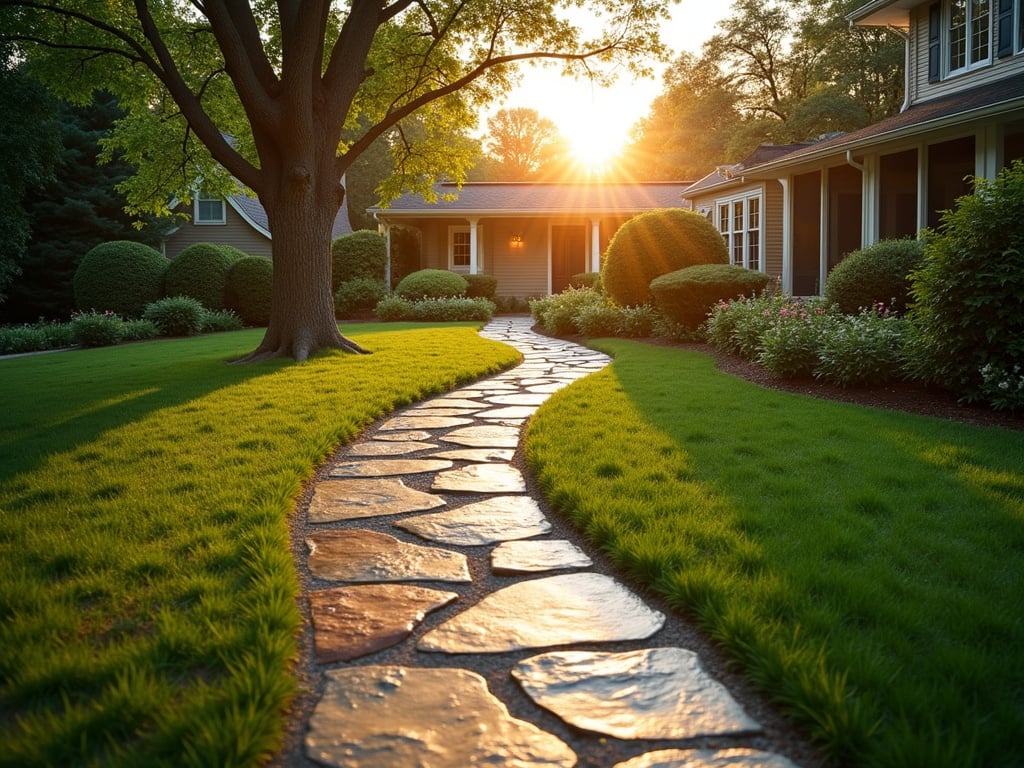
Your front yard is more than just a space between your house and the street—it’s the first impression your home makes on the world, a sanctuary that welcomes you home each day, and a canvas for expressing your personal style. As a feng shui consultant and wellness coach, I’ve seen firsthand how thoughtful front yard landscaping can transform not just the appearance of a home, but also the energy and Emotional wellbeing of its inhabitants. Let’s explore 24 ways to create a front yard that nurtures both nature and your soul.
The journey to your front door sets the tone for your entire home experience. When designing a pathway, consider how different materials might complement your home’s architectural style—natural stone pavers create a timeless, organic feel that connects with the earth, while contemporary concrete pavers can offer clean lines for a modern aesthetic. The key is choosing materials that feel authentic to your home’s character while ensuring safety and functionality.
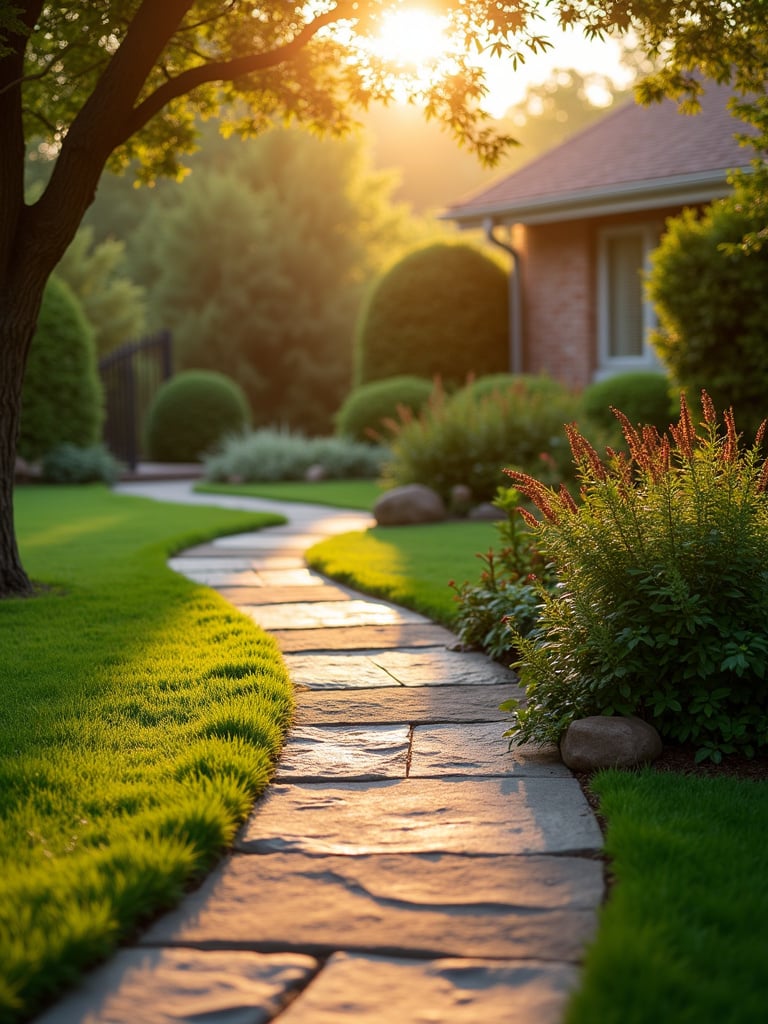
Creating proper lighting along your pathway isn’t just about safety—it’s about crafting a welcoming ambiance that guides you home. Studies have shown that well-designed pathways can significantly increase perceived property value, and there’s a psychological reason why curved paths feel more inviting than straight ones—they mirror the natural flow of energy in nature. When installing your pathway, start by outlining your desired route with landscape paint or rope, allowing you to visualize the flow before making permanent changes. Remember to incorporate proper drainage by adding a gravel foundation beneath your pavers to ensure longevity.
Color has a profound impact on our emotional wellbeing, and nowhere is this more evident than in a thoughtfully designed flower bed. When selecting flowers for your front yard landscaping, consider both your aesthetic preferences and your local climate. The secret to a successful flower bed lies in understanding not just what grows well in your area, but how different colors can affect your mood and energy throughout the seasons.
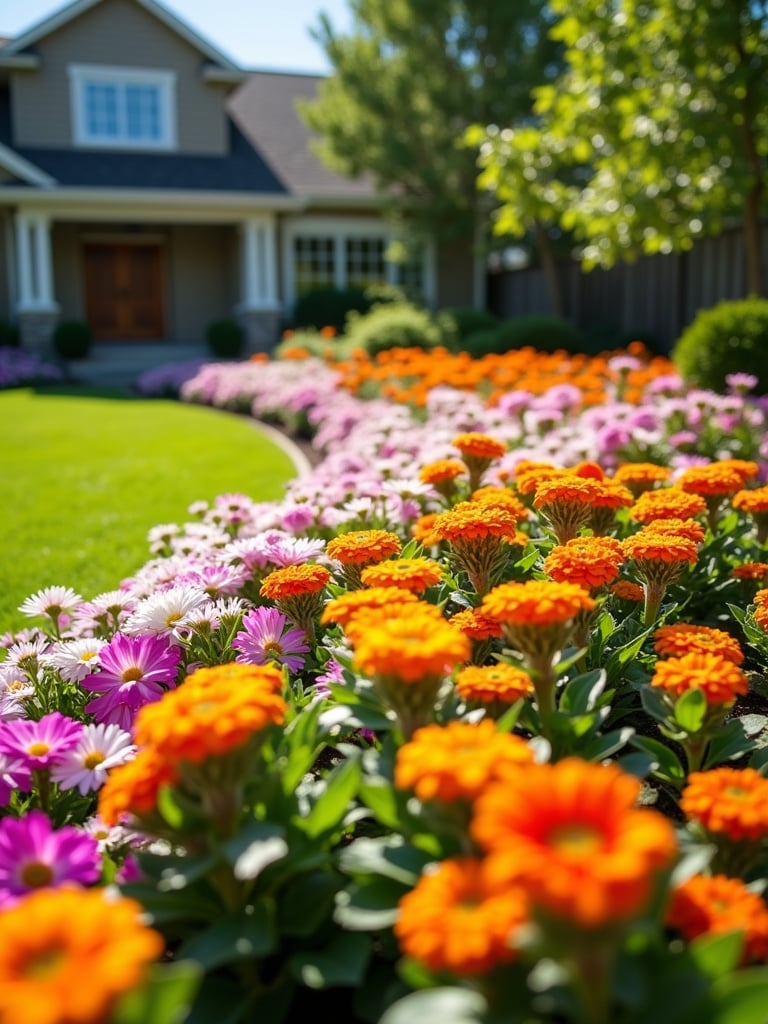
Creating visual depth through layering is an art form that nature has perfected. By combining annuals and perennials, you can ensure continuous color while creating a dynamic display that changes throughout the year. The key to success lies in proper soil preparation—invest time in improving your soil quality with compost and well-rotted manure before planting. This foundation will support healthy growth and vibrant blooms. Different flower colors attract specific pollinators, so by choosing a diverse palette, you’re not just creating beauty for yourself but supporting local wildlife as well.
Water has long been recognized for its ability to transform front yard landscaping and soothe our spirits. When considering a water feature, think beyond mere decoration—contemplate how its presence can create a multi-sensory experience that enhances your daily life. The gentle sound of moving water can mask urban noise and create a peaceful atmosphere that begins working its magic before you even step inside your home.
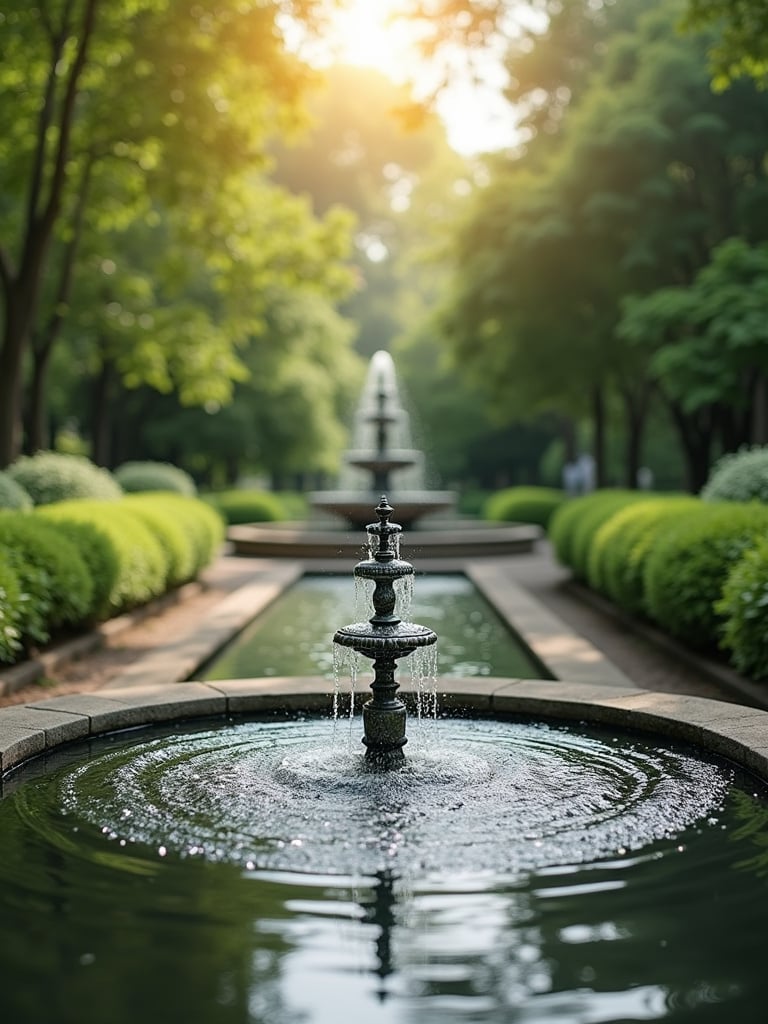
Selecting the right water feature involves balancing aesthetics with practicality. Whether you choose a small solar-powered fountain or a more elaborate pond, ensure it’s properly scaled to your space and easy to maintain. Position it near a seating area where you can fully appreciate its calming effects. Research shows that the sound of moving water can significantly reduce stress levels and improve mental clarity. Water features also attract local wildlife like birds and butterflies, creating a vibrant mini-ecosystem in your front yard.
In our busy lives, finding ways to create beauty without adding to our daily tasks is essential for maintaining balance. Low-maintenance ground cover offers an elegant solution that can dramatically reduce your yard work while enhancing your landscape’s visual appeal. The key is selecting varieties that thrive in your specific climate and soil conditions—plants like creeping thyme or sedum not only provide excellent coverage but also offer drought tolerance that can significantly reduce water consumption.
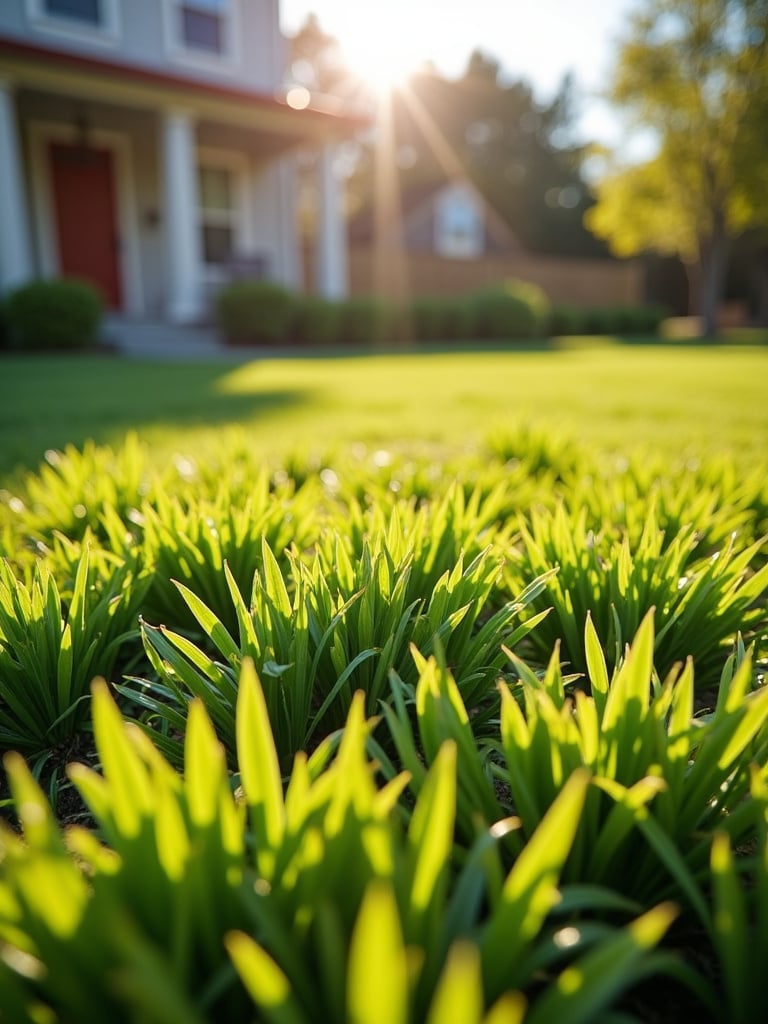
Before planting your ground cover, prepare the soil thoroughly by loosening it and incorporating organic matter. This initial investment in soil health will pay dividends in the form of stronger, more resilient plants. Consider planting in groups or clusters to ensure quick coverage and a more natural appearance. Many ground cover varieties are bee-friendly, so by choosing the right plants, you’re not just reducing maintenance—you’re supporting local pollinators and contributing to biodiversity. These hardy plants also help prevent soil erosion and naturally suppress weed growth, creating a self-sustaining ecosystem in your front yard landscaping.
Transform your front yard into a space that nourishes both body and soul by incorporating edible elements into your landscape design. This thoughtful approach to gardening isn’t just about growing food—it’s about creating a meaningful connection with your environment while adding unique visual interest to your yard. The key is selecting edible plants that not only thrive in your local conditions but also complement your existing landscape design.
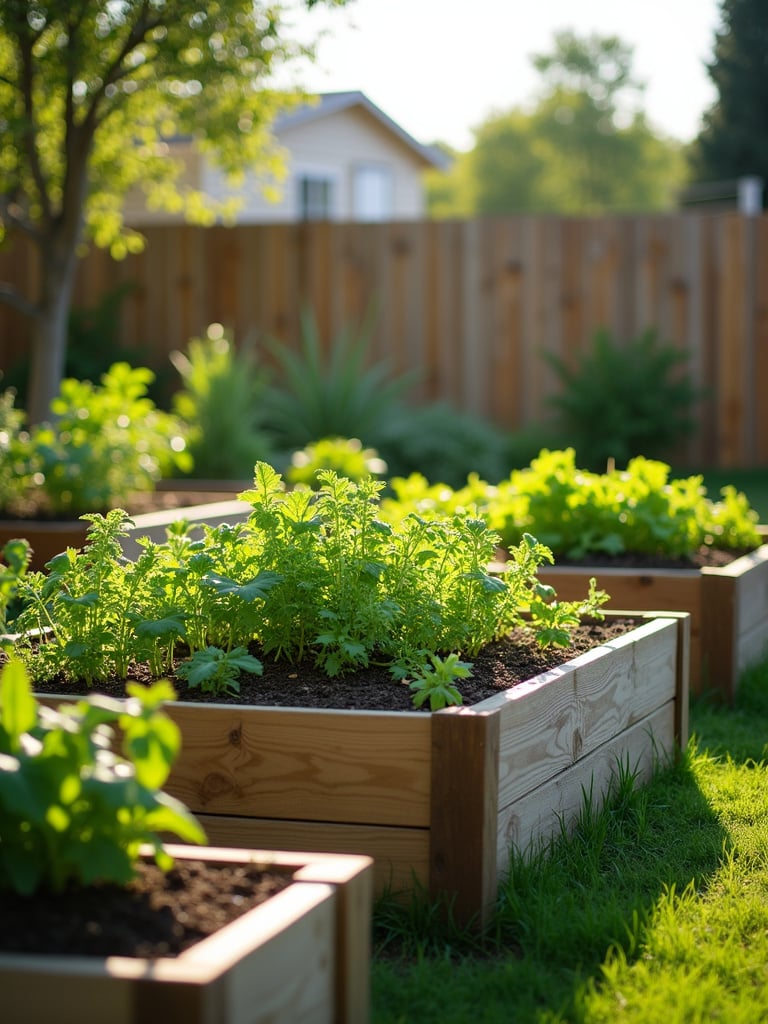
Consider integrating berry bushes or dwarf fruit trees as focal points, or create an attractive raised bed near your entrance for fresh herbs and vegetables. Many edible plants offer beautiful flowers and foliage, making them excellent ornamental choices as well. When planning your edible landscape, group plants with similar water and sunlight needs together for optimal growth. Use attractive planters or raised beds to elevate herbs and greens, creating visual interest while keeping your garden organized and accessible.
The thoughtful use of gravel and stone in your front yard landscaping can create a sense of permanence and grounding while offering practical benefits for maintenance and drainage. When selecting materials, consider how different types of stone might complement your home’s architecture. River rock can create a natural, organic feel, while colored pea gravel can add intentional pops of color that tie into your overall design scheme.
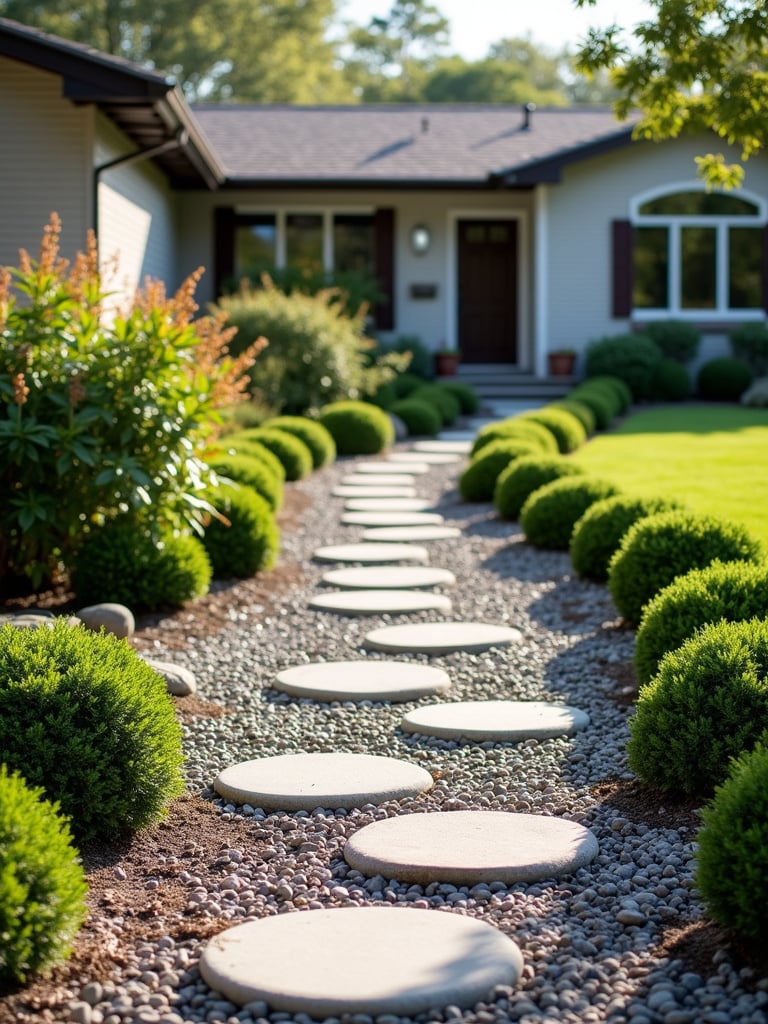
Creating a successful stone landscape requires proper preparation and installation. Start by laying down a thick layer of landscape fabric to prevent weed growth, and consider adding borders or edging to contain the stone within designated areas. One of the most appealing aspects of stone landscaping is its longevity—these materials require minimal upkeep and can last for years while effectively preventing soil erosion. By combining different sizes and types of stone, you can create visual interest and texture that evolves beautifully with the changing light throughout the day.
Choosing the right ornamental tree for your front yard is like selecting a living sculpture that will grow and evolve with your landscape over time. When selecting your tree, consider not just its current size but its mature dimensions, ensuring it will maintain proper proportions with your home as it grows. Species selection is crucial—flowering cherry trees and Japanese maples offer stunning visual interest throughout the seasons, while trees with vibrant fall foliage can create dramatic seasonal transformations.
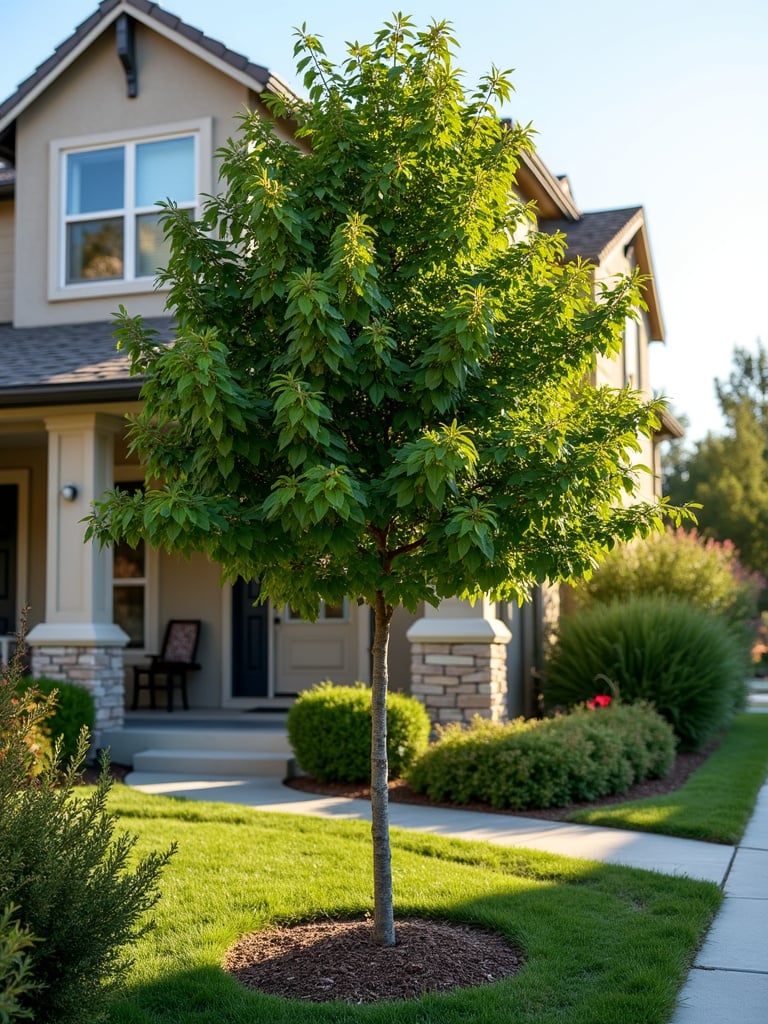
The benefits of incorporating an ornamental tree extend far beyond aesthetics. These living focal points provide essential shade during summer months, creating comfortable micro-climates in your yard. When planting, take care to prepare the hole properly and position the root ball at the correct height—these initial steps will ensure your tree thrives for years to come. Consider how the tree will interact with other elements of your front yard landscaping as it matures, creating a cohesive design that grows more beautiful with time.
Creating a welcoming seating area in your front yard can transform it from a purely visual space into one that invites connection and contemplation. When designing your seating area, consider both the practical aspects of outdoor furniture selection and the emotional experience you want to create. The right combination of comfortable seating, thoughtful placement, and surrounding greenery can create an Outdoor living room that extends your home’s welcoming energy into the landscape.
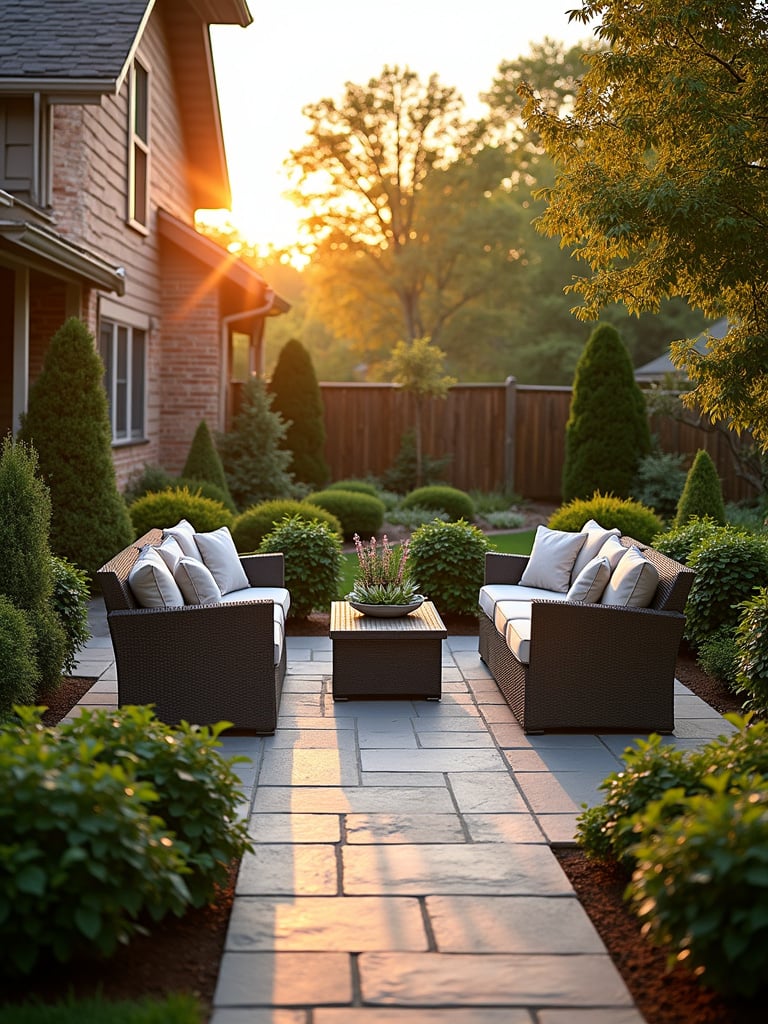
Take time to measure and prepare your space carefully, considering factors like sun exposure and privacy. Adding an overhead cover can protect from sun and rain while creating a sense of intimacy. Consider incorporating a built-in bench or swing for added functionality and visual interest. Research shows that outdoor seating areas enhance social interaction and property enjoyment, making them a worthwhile investment in your home and wellbeing. Adding soft touches like outdoor rugs and weather-resistant cushions can increase comfort while helping the space feel like a natural extension of your indoor living areas.
Vertical gardening with climbing plants offers a unique opportunity to transform ordinary walls and fences into living tapestries of color and texture. When selecting climbing plants, consider both the structure they’ll grow on and their growth habits—some varieties, like ivy or clematis, are perfect for creating lush green walls, while fragrant climbing vines near entryways can create a multi-sensory welcome experience.
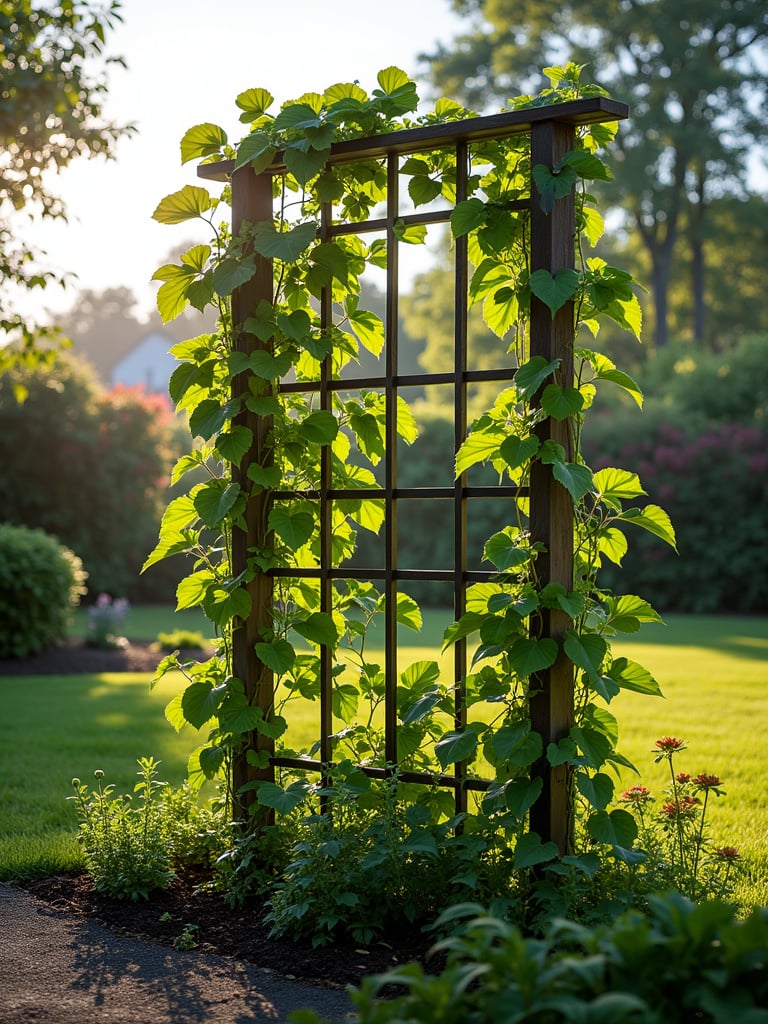
The key to success with climbing plants lies in proper support and training. Start by securing your trellis or structure firmly into the ground, then guide young vines along desired growth paths. Regular pruning will help maintain the desired shape and prevent overcrowding. Beyond their aesthetic appeal, climbing plants serve practical purposes too—they can create privacy, add dimension to otherwise bland walls, and some varieties, like wisteria, offer stunning blooms and enchanting fragrance. These vertical elements help create a sense of enclosure and intimacy in your outdoor space.
Thoughtful landscape lighting transforms your front yard into an enchanting nighttime retreat while enhancing safety and security. When planning your lighting scheme, consider how different lighting techniques can highlight key features while creating a welcoming ambiance. The goal is to create layers of light that guide movement through the space while showcasing your front yard landscaping’s best features after dark.
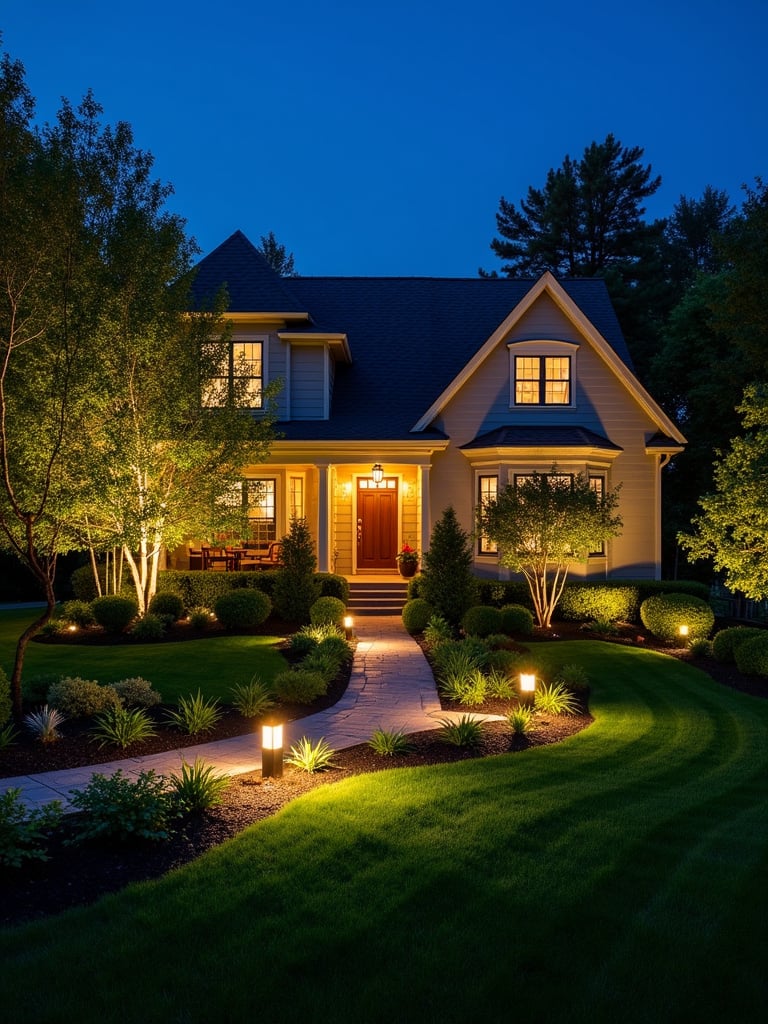
Start by installing low-voltage landscape lighting along paths and driveways for safety, then add spotlights to showcase specific trees or architectural details. Modern lighting options like LED fixtures and solar-powered lights offer energy-efficient solutions that can be automated for convenience. Remember that effective night lighting isn’t just about visibility—it’s about creating mood and extending the usability of your outdoor spaces into the evening hours. Consider using timers or motion sensors to ensure lights are only on when needed, creating an energy-efficient solution that enhances your home’s nighttime presence.
A garden bench is more than just a place to sit—it’s an invitation to pause, reflect, and fully experience your outdoor space. When selecting and placing a bench, consider both its aesthetic contribution and its potential to create moments of tranquility in your daily routine. The perfect location might be under a shady tree where you can observe seasonal changes, or along a winding path where it creates a natural stopping point in your garden journey.
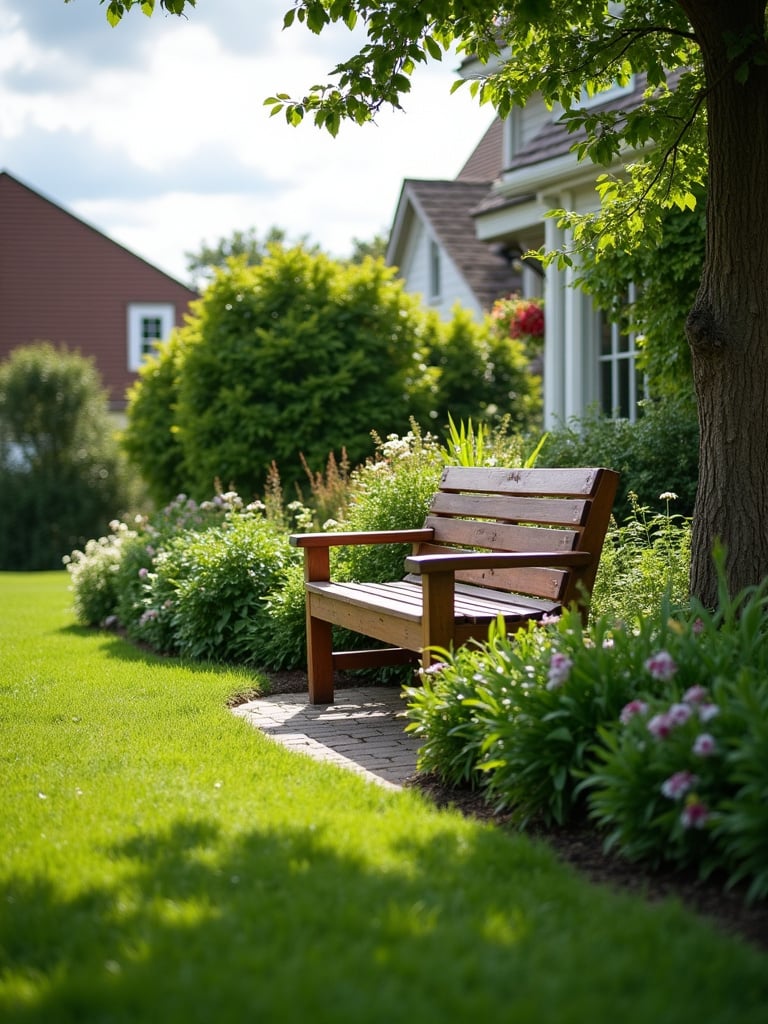
Material selection plays a crucial role in both the visual impact and longevity of your bench. Wood benches develop character over time, weathering beautifully to blend with their surroundings, while metal options can provide a more modern touch. Whatever material you choose, ensure proper installation on a flat, stable surface and consider applying appropriate protective treatments to extend its life. A well-placed bench can become a meditation spot, a reading nook, or simply a place to appreciate the beauty of your landscape throughout the changing seasons.
Rock gardens offer a unique opportunity to create miniature landscapes that combine the enduring beauty of stone with the delicate nature of specialized plants. When designing your rock garden, consider how different sizes and types of rocks can work together to create natural-looking layers and elevations. This type of garden can be especially effective in areas where traditional plantings might struggle, turning challenging spots into captivating focal points within your front yard landscaping design.

The key to a successful rock garden lies in proper plant selection and placement. Alpine plants and succulents are particularly well-suited to these environments, thriving in the well-draining conditions that rock gardens provide. Think of your rock garden as a living sculpture that changes with the seasons. When arranging your rocks, consider both aesthetics and practical drainage needs—proper positioning can create micro-climates that protect and nurture your chosen plants. These specialized gardens can create their own unique ecosystems, providing habitat for beneficial insects and small wildlife.
Adding a birdbath or feeder to your landscape creates an invitation for nature’s most graceful visitors to become part of your daily garden experience. When selecting and placing these features, consider both the safety of the birds and your own viewing pleasure. Position them where they’re visible from inside your home but keep them at a safe distance from potential predators and areas of high activity.
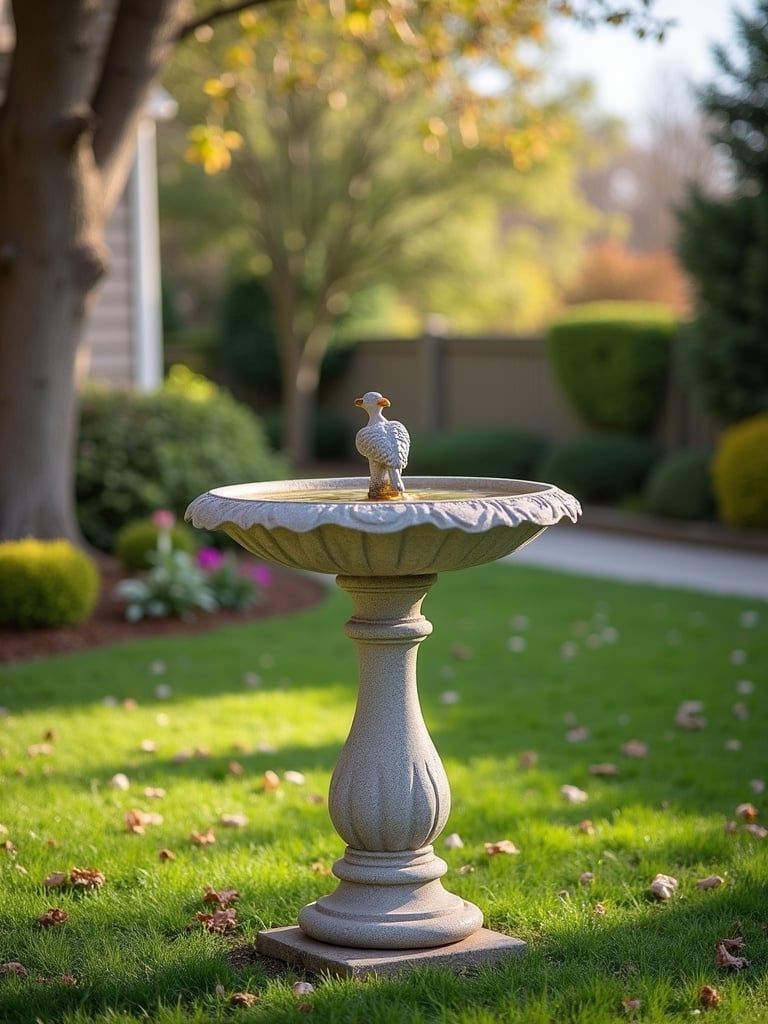
Regular maintenance is essential for keeping these features both attractive and healthy for your feathered friends. Clean your birdbath regularly and keep feeders well-stocked with appropriate food choices. Beyond their obvious appeal to birds, these features can also attract beneficial pollinators to your garden. The movement and life they bring to your landscape create a dynamic environment that changes throughout the day and seasons, adding another layer of interest to your front yard landscaping. The gentle sound of splashing water and birdsong adds another sensory dimension to your outdoor space, creating a more immersive and peaceful garden experience.
Container gardening offers a versatile way to add color, texture, and height to your landscape while maintaining the flexibility to adapt your design as seasons and preferences change. When selecting containers, consider how their style and materials complement your home’s architecture. Think beyond traditional flower pots—decorative urns, repurposed items, or modern geometric planters can all contribute to your overall design aesthetic.
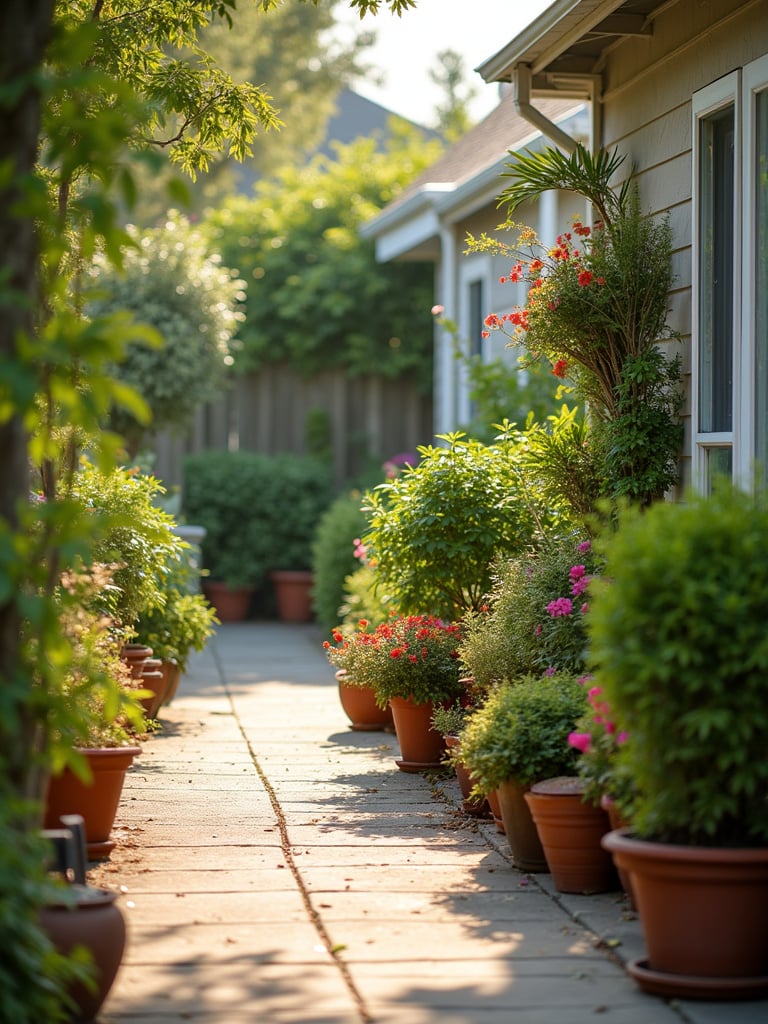
Success with container gardens starts with proper soil selection and drainage. Use well-draining soil mixes specifically formulated for containers, and ensure your pots have adequate drainage holes. Group containers for visual impact, varying heights and plant selections to create interesting compositions. One of the greatest advantages of container gardening is its mobility—you can easily move plants to protect them from harsh weather or refresh your design. Consider elevating some pots on stands to improve drainage and create additional visual interest through varying heights.
Creating clear borders in your landscape design is like framing a beautiful piece of art—it provides definition, structure, and a sense of intentional design. When choosing materials for your borders, consider how they’ll complement both your plantings and your home’s architecture. Whether you opt for landscape timbers, bricks, or metal edging, the key is creating clean lines that guide the eye and contain your garden elements.
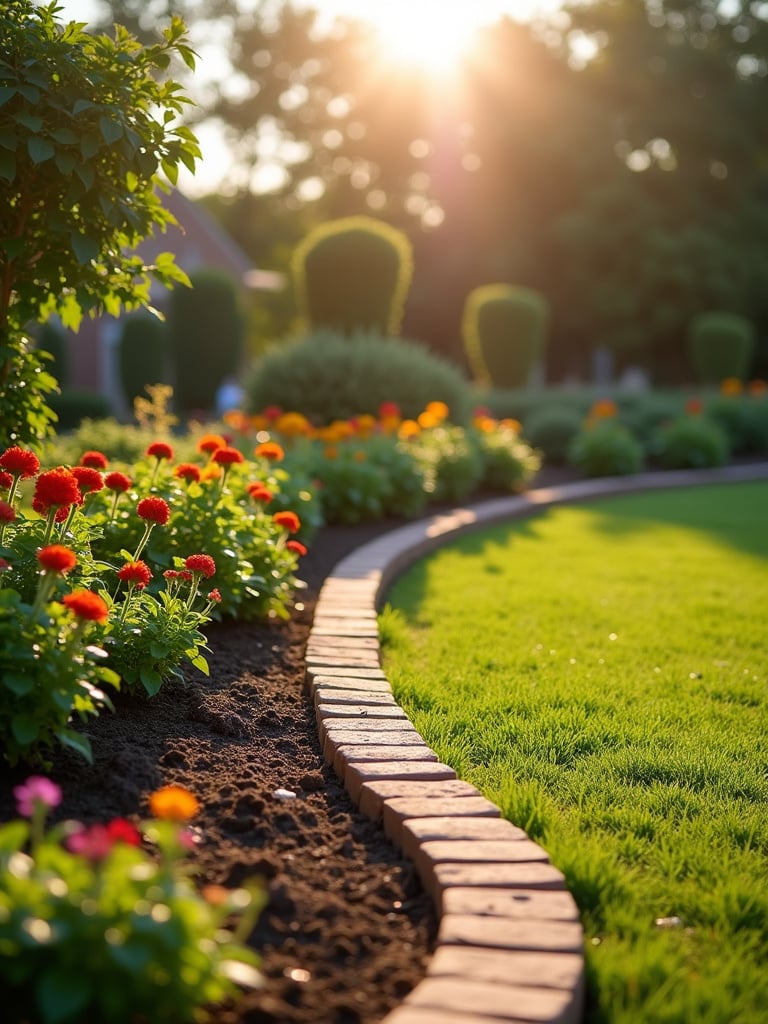
The benefits of defined borders extend beyond aesthetics. These boundaries prevent grass from encroaching into garden beds and help maintain the integrity of your design over time. When installing borders, use a spade or edging tool to create clean cuts in the soil, then backfill appropriately to secure your chosen material. Consider incorporating plants like boxwood or hostas along the borders to create a living edge that softens hard lines while maintaining definition. Well-defined borders instantly improve Curb appeal and create a sense of order and harmony in your landscape.
Garden art and sculptures offer an opportunity to express your personal style while creating focal points that draw the eye through your landscape. When selecting pieces, consider how they’ll interact with your existing plantings and how they might create different experiences as light and seasons change. The key is choosing pieces that feel authentic to your style while maintaining a balanced, harmonious environment.
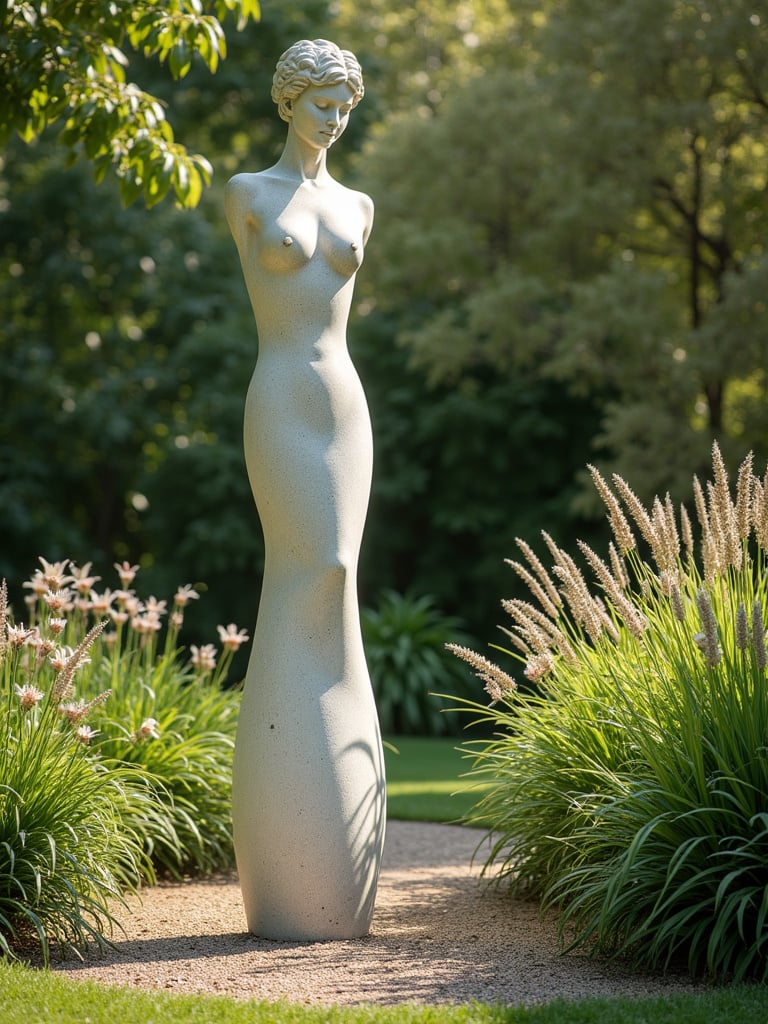
Thoughtful placement is crucial for garden art—pieces should feel naturally integrated into the landscape rather than simply placed as afterthoughts. Consider positioning artwork along walking paths or as focal points visible from key viewing areas. Remember that outdoor art helps break up the uniformity of a garden while adding personality and interest to your design. Whether you choose weatherproof sculptures, decorative wind chimes, or artistic birdhouses, ensure your selections are appropriately sized for your space and properly secured for outdoor display.
Mulching is both an art and a science—it’s about creating a polished look while providing essential benefits for your plants’ health. When selecting mulch, consider both its aesthetic contribution to your design and its practical benefits. Different types of mulch can complement various garden styles—bark mulch offers a natural look that works well with traditional landscapes, while stone mulch can provide modern contrast and enhanced drainage.

The benefits of proper mulching extend far beyond appearance. A 2-4 inch layer of mulch helps regulate soil temperature, retain moisture, and suppress weed growth. When applying mulch, keep it away from plant stems and tree trunks to prevent moisture-related problems. Organic mulches gradually decompose to improve soil health over time, creating a self-sustaining cycle that benefits your entire landscape. Consider refreshing your mulch in spring or fall to maintain both its functional and aesthetic benefits throughout the seasons.
Privacy hedges serve as living walls that create intimate spaces while maintaining a connection to nature. When planning your hedge, consider not just its screening potential but also how it will contribute to the overall harmony of your landscape. Fast-growing evergreen shrubs can provide quick results, while a combination of plant heights can create a more natural, layered appearance that feels less imposing.

The secret to a successful privacy hedge lies in proper spacing and maintenance. Plant shrubs close enough to grow together over time, but give them adequate room to develop healthy root systems. Regular pruning helps maintain density and desired height. Beyond their privacy function, hedges offer additional benefits—they can buffer sound from nearby streets, create windbreaks, and provide habitat for birds and beneficial insects. The repetitive elements of a hedge can also create a sense of rhythm in your landscape design, leading the eye through the space.
A flagstone path can transform a simple walkway into an artistic element that connects different areas of your landscape both physically and visually. When selecting flagstones, consider how their color and texture will complement your home’s architecture and existing landscape elements. Large, irregular flagstones create an organic, relaxed feel, while more uniform pieces can establish a more formal atmosphere.

The installation process requires careful attention to detail for both safety and longevity. Begin with a proper gravel base to ensure stability and drainage, then take time to fit pieces together like a puzzle, allowing appropriate spacing between stones. Consider adding small plants or ground cover between stones to soften edges and create a more established look. A well-designed flagstone path can withstand severe weather conditions while offering natural beauty and a welcoming atmosphere that improves with age.
A Zen garden offers a unique opportunity to create a space dedicated to mindfulness and contemplation. When designing your Zen garden, focus on simplicity and intentional arrangement of elements. Fine gravel or sand provides a neutral base that can be raked into patterns, while carefully selected rocks and minimal plantings create focal points that encourage meditation and reflection.

The beauty of a Zen garden lies in its ability to represent the larger universe within a confined space. Each element carries meaning—rocks might represent mountains, while raked patterns in the gravel could symbolize water or wind. Consider incorporating moss, small bonsai trees, or other low-lying plants to add subtle touches of life to the composition. The act of maintaining a Zen garden, particularly raking the gravel into new patterns, can become a meditative practice in itself, offering moments of peace in your daily routine.
Embracing native plants creates a deeper connection to your local ecosystem while ensuring a naturally thriving garden. When selecting native species, research which plants have historically flourished in your area—these plants have evolved to thrive in your specific climate and soil conditions. Beyond their natural adaptability, native plants create a sense of place and belonging in your landscape.
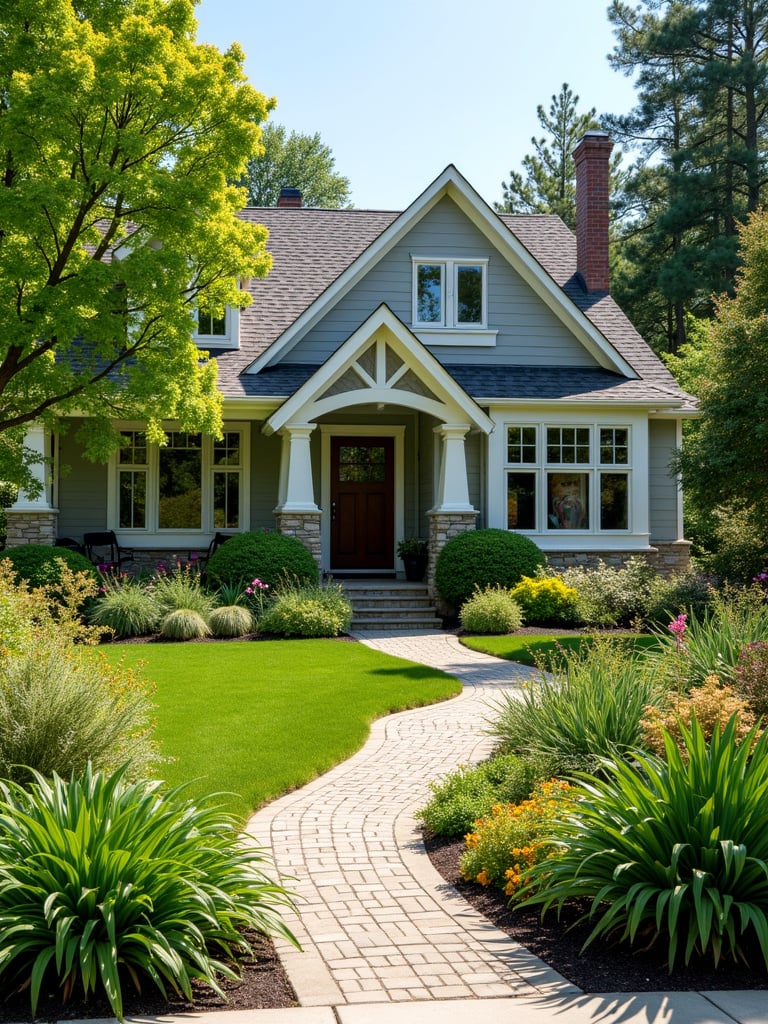
The benefits of native plantings extend far beyond easy maintenance. These plants require less water, fertilizer, and care than introduced species because they’re already adapted to local conditions. They also play a crucial role in supporting local wildlife, providing food and habitat for butterflies, birds, and beneficial insects. Consider grouping natives according to their preferred growing conditions and mulch well to help establish them. For maximum impact, choose plants that bloom at different times throughout the season, creating an ever-changing display that celebrates your region’s natural heritage.
Stepping stones offer a perfect balance of functionality and whimsy in your landscape design. When selecting stones, consider both their practical aspects—size, spacing, and stability—and their aesthetic contribution to your garden’s overall design. Whether you choose natural stone, cast concrete, or decorative options, ensure they create a comfortable walking rhythm while guiding visitors through your garden’s most beautiful features.

Installation requires careful attention to detail for both safety and visual appeal. Begin by using a spade to cut around each stone’s outline, creating a stable bed that allows the stone to sit flush with the surrounding soil. Add fine sand beneath each stone to ensure proper leveling and drainage. Consider how the stones will interact with surrounding plants—allow space for ground covers to soften edges and create a more established look. Well-placed stepping stones can reduce wear on your lawn while creating intentional pathways that invite exploration of your garden.
Designing a garden that attracts pollinators isn’t just about creating beauty—it’s about participating in the vital dance of nature that sustains our ecosystem. When planning your pollinator garden, include a diverse selection of flowering plants that will provide nectar and pollen throughout the growing season. Choose flowers with different shapes, sizes, and colors to attract a variety of beneficial insects and birds.
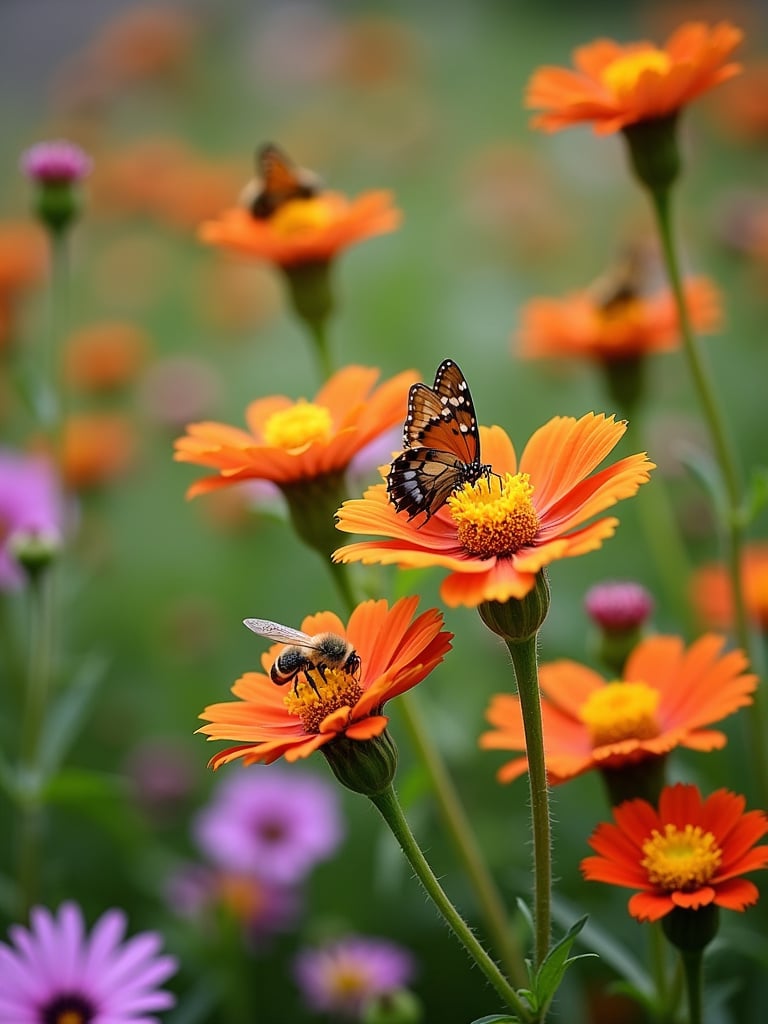
The key to a successful pollinator garden lies in creating a welcoming habitat that supports these essential creatures throughout their life cycles. Avoid using pesticides that can harm beneficial insects, and include water sources like shallow birdbaths or small water features. Group plants in clusters to make them more visible to passing pollinators, and incorporate both native and garden varieties to extend the blooming season. Remember that a thriving pollinator garden is a dynamic space that changes throughout the day as different species visit—creating an ever-changing display of natural activity.
In an era where environmental consciousness meets practical landscaping, xeriscaping offers a thoughtful solution that honors both aesthetics and sustainability. This water-wise approach isn’t just about replacing grass with rocks—it’s about creating a harmonious landscape that thrives in your local climate while minimizing resource consumption. When considering xeriscaping, take time to research which low-water plants are native to your region, as these will naturally require less maintenance and support local ecosystems.
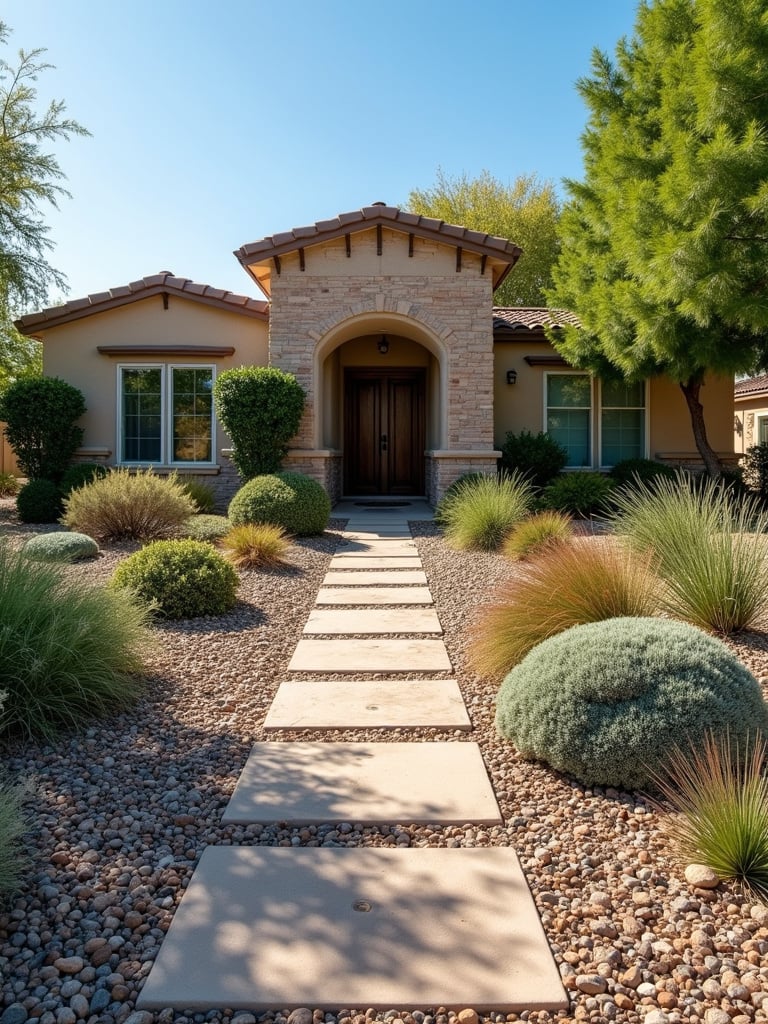
The beauty of xeriscaping lies in its ability to create stunning landscapes while dramatically reducing water usage. By grouping plants based on their water needs and incorporating elements like decorative gravel or stone, you can create distinct zones that are both visually appealing and highly efficient. Before beginning your xeriscape journey, focus on improving your soil’s water-retention capabilities—this foundational step will ensure your plants thrive with minimal irrigation. Remember, a well-designed xeriscape can reduce your landscape maintenance costs while creating a unique and environmentally conscious outdoor space that stands out in your neighborhood.
By implementing any of these 24 landscaping ideas, you’re not just improving your home’s curb appeal—you’re creating a space that nurtures both nature and your wellbeing. Whether you choose to start small with a simple pathway or embrace a complete xeriscape transformation, remember that your front yard is a living canvas that reflects your connection to both your home and the natural world. Let it be a space that welcomes, inspires, and brings joy to all who pass by.